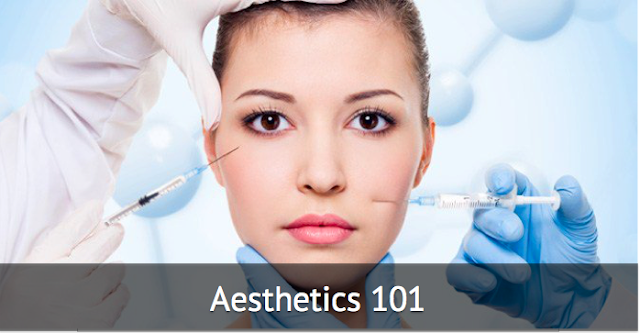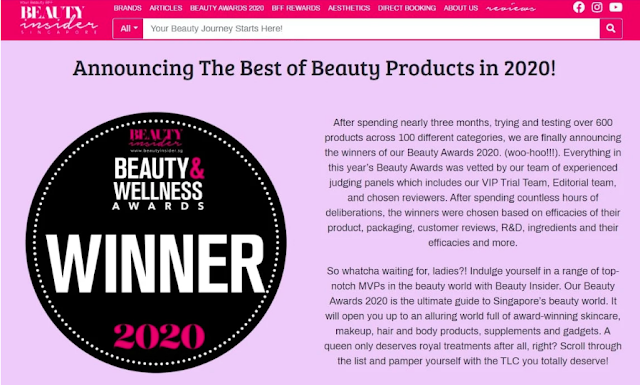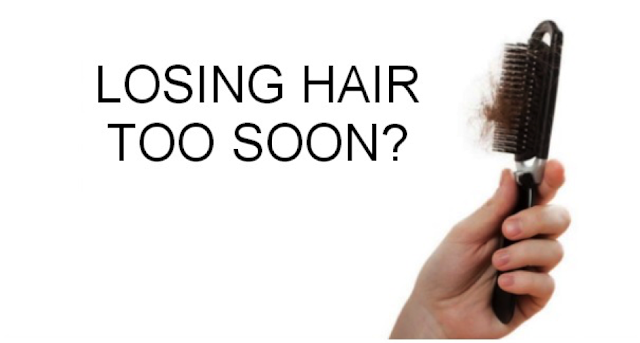Aesthetics 101 (Part 3): The 6R's of Aesthetics
This is part 3 of our Aesthetics 101 series. The American Association of Aesthetic Medicine and Surgery program revolves around the principle known as the 4R's of Aesthetics. Here, we would like to cover a slightly broader principle known as the 6R's of Aesthetics.
If you try every anti-aging product and procedure you read about online or in a magazine, you would have very fast run out of money. How do you decide on the best options for your needs?
In order to declutter your aesthetic lifestyle, you could consider the 6R's of aesthetics principle in order to categorise your decision making in terms of aesthetic related products and services.
The 6R's treatments as per the name implies, can be broken down into six main categories.
#1: RELAXATION
Many of the wrinkles on your face are what doctors refer to as dynamic wrinkles. Dynamic wrinkles are caused when the muscles of your face are active. For example, when you squint, the action in the muscles around your eyes cause crow’s feet wrinkles to appear. When you scowl, the muscles between your eyebrows cause vertical lines to appear above your nose. Sure, you frowned and squinted in your younger years, but decades of action have made your facial muscles strong, and as a result those lines become more noticeable.
When we talk about relaxation, this is where our neurotoxins, classically Botox, are used. When you get Botox to take care of these deep lines, these glabella lines (forehead wrinkles) or these crow’s feet, it relaxes the muscles that exaggerate the wrinkles.
#2: REPLACE
The American Association of Aesthetic Medicine and Surgery program uses 'Refill" as one of the 4R's of aesthetics. However, we would prefer to use the word 'reduce' in order to cover a broader concept that includes other 'replacement' procedures like hair transplant and cosmetic dentistry.
Facial fillers are used to refill or replace areas of the face where volume is lost over time. Volume to the cheeks could be rejuvenated using a filler called Juvederm Voluma. Voluma has a thick, firm texture, making it ideal for adding volume to the deep parts of the cheeks, just above the cheekbones.
In areas closer to the surface of the face where volume is lost, such as the nasolabial folds or the lips, the softer, lighter fillers like the new Juvederm Vollure or Volbella can be used. Volbella is very thin, can be injected superficially and it's suitable to reconstruct the architecture of the lip, the shape of the lip, without making it too big.
The goal with facial fillers is to restore lost volume, but not to make a facial feature appear large or puffy. There are so many examples where fillers are done poorly and people look big.
#3: RESURFACE
As we age, a lot of things happen with our skin. The 'Resurface' R is all about resurfacing. We resurface skin to improve the texture, tone and color. Tools for resurfacing the skin fall within a broad spectrum, ranging from skincare products that you apply at home to a deep laser peel requiring a two week recovery. The more energy you get into the skin, the longer will be the downtime.
#4: REPOSITION / RESUSPEND
The American Association of Aesthetic Medicine and Surgery program uses 'Resuspend" as one of the 4R's of aesthetics.
When facial aging reaches a point where facial fillers are no longer achieving a crisp jawline or youthful cheeks, it may be time for a facelift. Subtle repositioning with fillers and with Botox and HIFU (high intensity focused ultrasound) could be achieved, but for true and permanent repositioning, you might need to consider surgical procedures such as facelift.
In recent years, lasers have also played a big part in non-surgical feminine rejuvenation procedures and other forms of aesthetic gynecology. For example, the multiplatform CO2 MiXto Pro V-Lase® from Lasering USA (San Ramon, Calif.) performs non-invasive vaginal rejuvenation treatments, in addition to ablative skin resurfacing, hair removal and facial rejuvenation. Indications include acne scars, facial wrinkles, stretch marks, facial and leg vascular lesions, and benign pigmented lesions.
#5: REDUCE
At the same time you are losing volume in your cheeks and lips, you are often gaining volume along the jawline and below the chin. What we’re trying to accomplish with rejuvenation is to restore that youthful facial shape which has full volume across the midface, and a sharp, lighter jawline.
Liposuction is a surgical option to reduce fat, but there are several less invasive options. An injectable called Kybella, can be used to remove fat below the chin without surgery or downtime.
Weight loss programs are highly popular especially in developed countries. Although diet and exercise remain the mainstay in terms of weight loss program, there is a growing trend in terms of demand for non-surgical body-sculpting options such as HIFU, CoolSculpting and RF offered by many aesthetic clinics.
#6: REMOVE
There are many energy-based technologies, from solid-state KTP lasers to Ruby, pulsed dye, diode, Nd:YAG, Er:YAG, CO2, etc.; to intense pulsed light (IPL), radiofrequency (RF), ultrasound and light-emitting diodes (LEDs).
These technologies can be used to remove hair, pigmentation, pores, tattoo, acne scars etc.
As demand for energy-based anti-aging procedures continues to rise, practitioners are faced with choosing from a wide array of aesthetic platforms and devices that are, at times, difficult to differentiate. Some are one trick ponies and offer a single procedure; others are full-blown multifunctional platforms that perform everything from energy-based hair removal to fat reduction, laser skin resurfacing and skin tightening.
Understanding the history of energy-based devices, as well as their recent technology improvements is important, too. For instance, Nd:YAG and 810 nm diode lasers are well known for addressing hair removal.
Lasers are also useful in addressing other skin-related problems, such as facial wrinkles, pigmented and/or vascular lesions, acne scars and other skin blemishes that can be treated using a wide assortment of wavelengths.
Of late, tattoo removal, once the sole province of Q-switched and Nd:YAG lasers, has been addressed by modern picosecond devices.
WRAPPING IT UP
Hopefully, you have not been overwhelmed with the technicalities above. There is no one size fits all solution. You need to discuss with your trusted aesthetic doctor in order to come out with an option or a mix of options that will be most suitable for your condition.
FIND A DOCTOR
In order to declutter your aesthetic lifestyle, you could consider the 6R's of aesthetics principle in order to categorise your decision making in terms of aesthetic related products and services.
The 6R's treatments as per the name implies, can be broken down into six main categories.
#1: RELAXATION
Many of the wrinkles on your face are what doctors refer to as dynamic wrinkles. Dynamic wrinkles are caused when the muscles of your face are active. For example, when you squint, the action in the muscles around your eyes cause crow’s feet wrinkles to appear. When you scowl, the muscles between your eyebrows cause vertical lines to appear above your nose. Sure, you frowned and squinted in your younger years, but decades of action have made your facial muscles strong, and as a result those lines become more noticeable.
When we talk about relaxation, this is where our neurotoxins, classically Botox, are used. When you get Botox to take care of these deep lines, these glabella lines (forehead wrinkles) or these crow’s feet, it relaxes the muscles that exaggerate the wrinkles.
#2: REPLACE
The American Association of Aesthetic Medicine and Surgery program uses 'Refill" as one of the 4R's of aesthetics. However, we would prefer to use the word 'reduce' in order to cover a broader concept that includes other 'replacement' procedures like hair transplant and cosmetic dentistry.
Facial fillers are used to refill or replace areas of the face where volume is lost over time. Volume to the cheeks could be rejuvenated using a filler called Juvederm Voluma. Voluma has a thick, firm texture, making it ideal for adding volume to the deep parts of the cheeks, just above the cheekbones.
In areas closer to the surface of the face where volume is lost, such as the nasolabial folds or the lips, the softer, lighter fillers like the new Juvederm Vollure or Volbella can be used. Volbella is very thin, can be injected superficially and it's suitable to reconstruct the architecture of the lip, the shape of the lip, without making it too big.
The goal with facial fillers is to restore lost volume, but not to make a facial feature appear large or puffy. There are so many examples where fillers are done poorly and people look big.
#3: RESURFACE
As we age, a lot of things happen with our skin. The 'Resurface' R is all about resurfacing. We resurface skin to improve the texture, tone and color. Tools for resurfacing the skin fall within a broad spectrum, ranging from skincare products that you apply at home to a deep laser peel requiring a two week recovery. The more energy you get into the skin, the longer will be the downtime.
Tools to Resurface the Skin:
- Chemical Peels
- Microneedling
- Laser and Energy Devices
#4: REPOSITION / RESUSPEND
The American Association of Aesthetic Medicine and Surgery program uses 'Resuspend" as one of the 4R's of aesthetics.
When facial aging reaches a point where facial fillers are no longer achieving a crisp jawline or youthful cheeks, it may be time for a facelift. Subtle repositioning with fillers and with Botox and HIFU (high intensity focused ultrasound) could be achieved, but for true and permanent repositioning, you might need to consider surgical procedures such as facelift.
In recent years, lasers have also played a big part in non-surgical feminine rejuvenation procedures and other forms of aesthetic gynecology. For example, the multiplatform CO2 MiXto Pro V-Lase® from Lasering USA (San Ramon, Calif.) performs non-invasive vaginal rejuvenation treatments, in addition to ablative skin resurfacing, hair removal and facial rejuvenation. Indications include acne scars, facial wrinkles, stretch marks, facial and leg vascular lesions, and benign pigmented lesions.
#5: REDUCE
At the same time you are losing volume in your cheeks and lips, you are often gaining volume along the jawline and below the chin. What we’re trying to accomplish with rejuvenation is to restore that youthful facial shape which has full volume across the midface, and a sharp, lighter jawline.
Liposuction is a surgical option to reduce fat, but there are several less invasive options. An injectable called Kybella, can be used to remove fat below the chin without surgery or downtime.
Weight loss programs are highly popular especially in developed countries. Although diet and exercise remain the mainstay in terms of weight loss program, there is a growing trend in terms of demand for non-surgical body-sculpting options such as HIFU, CoolSculpting and RF offered by many aesthetic clinics.
#6: REMOVE
There are many energy-based technologies, from solid-state KTP lasers to Ruby, pulsed dye, diode, Nd:YAG, Er:YAG, CO2, etc.; to intense pulsed light (IPL), radiofrequency (RF), ultrasound and light-emitting diodes (LEDs).
These technologies can be used to remove hair, pigmentation, pores, tattoo, acne scars etc.
As demand for energy-based anti-aging procedures continues to rise, practitioners are faced with choosing from a wide array of aesthetic platforms and devices that are, at times, difficult to differentiate. Some are one trick ponies and offer a single procedure; others are full-blown multifunctional platforms that perform everything from energy-based hair removal to fat reduction, laser skin resurfacing and skin tightening.
Understanding the history of energy-based devices, as well as their recent technology improvements is important, too. For instance, Nd:YAG and 810 nm diode lasers are well known for addressing hair removal.
Lasers are also useful in addressing other skin-related problems, such as facial wrinkles, pigmented and/or vascular lesions, acne scars and other skin blemishes that can be treated using a wide assortment of wavelengths.
Of late, tattoo removal, once the sole province of Q-switched and Nd:YAG lasers, has been addressed by modern picosecond devices.
References:
WRAPPING IT UP
Hopefully, you have not been overwhelmed with the technicalities above. There is no one size fits all solution. You need to discuss with your trusted aesthetic doctor in order to come out with an option or a mix of options that will be most suitable for your condition.
FIND A DOCTOR









Comments
Post a Comment